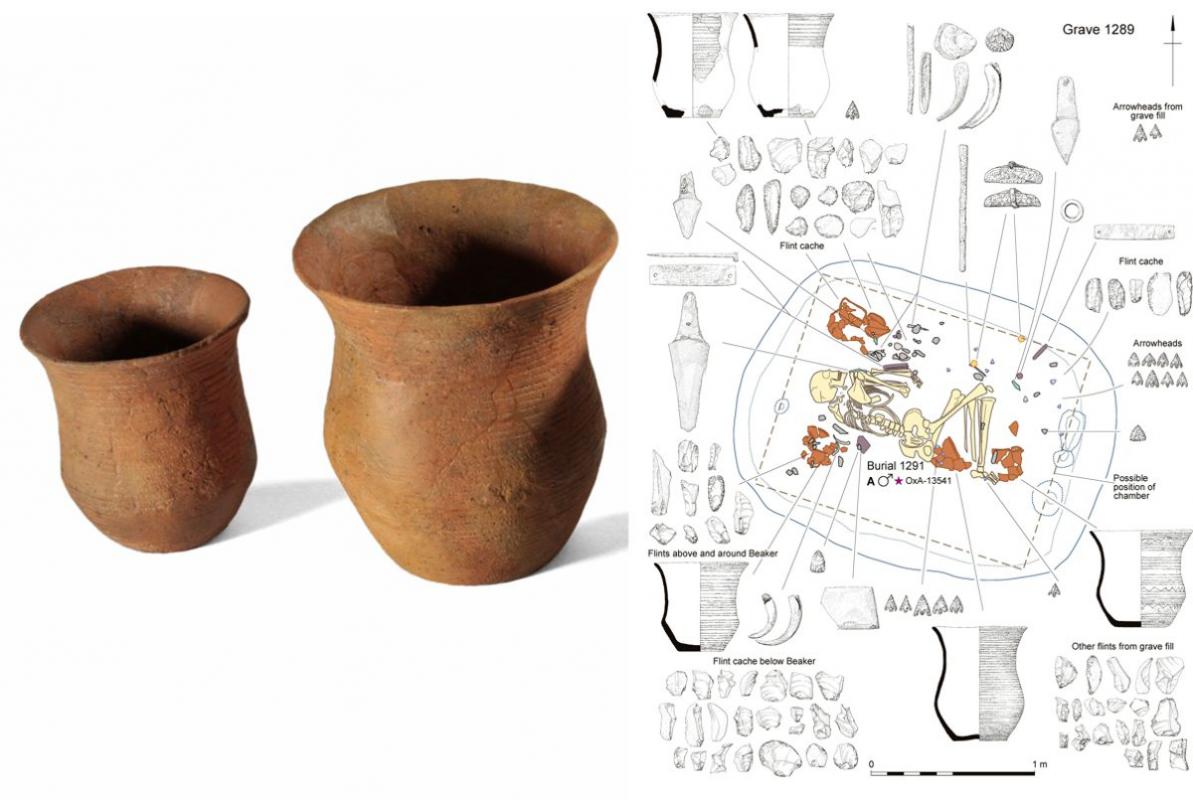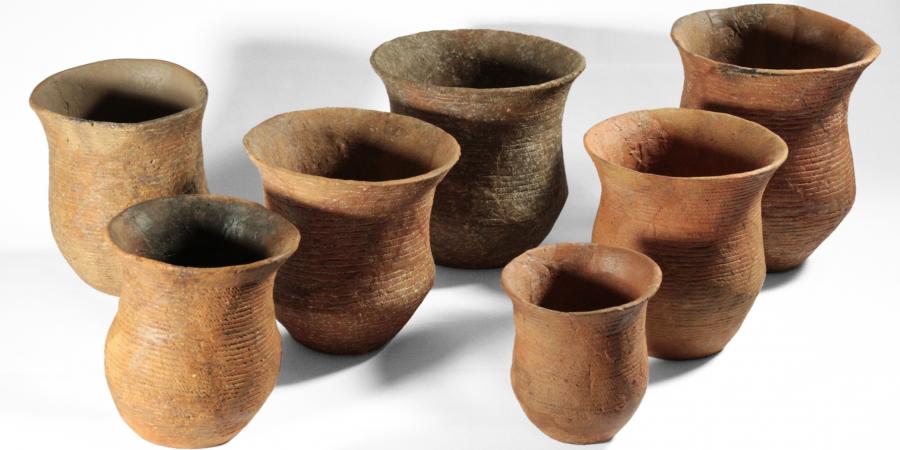Wessex Archaeology was part of an international team of 144 archaeologists and geneticists from Europe and the United States that collaborated on the largest ever study of Bell Beaker DNA. Working with David Reich and Iñigo Olalde (both Harvard Medical School), the results have just been published in the scientific magazine Nature. Jacqueline McKinley, Kirsten Egging Dinwiddy and Alistair Barclay formed part of this team, providing expert knowledge and undertaking sampling of skeletal remains excavated by Wessex Archaeology and held by Salisbury and Wiltshire Museums.
Bell Beaker material culture has a European distribution that appeared from between 2750 and 2500 BC. The reasons for its spread, either by migration or cultural diffusion, have been much debated over the decades. In the British Isles, the emergence of the Bell Beaker culture, bringing with it new ideas, beliefs, knowledge and values – including the first metalwork of copper and gold – and featuring a wide and expanding network of distant connections, may have appeared ‘modern’ in comparison with the Neolithic world which had perhaps had its day. Much of the evidence derives from the remains of a distinct range of inhumation burials with Wessex, particularly the area of Salisbury Plain centred on Stonehenge, producing a number of important inhumation graves; most famously that of the 'Amesbury Archer', one of the richest Beaker burials ever found. There are, however, many less ostentatious burial remains of this date. The DNA study set out to reveal the origins of these people and their relationship with the earlier Neolithic population.

The results of the project revealed a complex picture across Europe in which both migration and cultural diffusion played a part. For the British Isles, however, the genetic evidence demonstrates that a near complete population turnover occurred from the 24th century BC onwards.
Details of the study ‘The Beaker Phenomenon and the Genomic Transformation of Northwest Europe’ appeared online in Nature on Wednesday 21 February.
